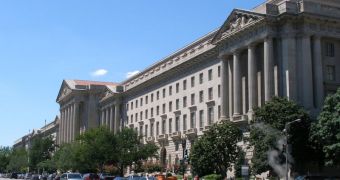Nowadays, the US coal industry burns approximately 900 million metric tons of coal every year. This entire process in responsible for spreading billions of tons of CO2 into the atmosphere, substantially decreasing the air quality.
Since the carbon footprint reaches alarming rates, the governments scale up their efforts to replace the coal-based power with greener sources of energy.
According to experts in this field of activity, another negative effect of the coal usage is the significant amount of coal ash which is left behind. The construction industry managed to apply the benefits of this residual compound by integrating it in the manufacturing process of its final products, like cement, concrete.
Coal ash can also be spotted in farmers' fields and in old coal mines, but the experts warn that the product's usage isn't always beneficial. In most of the cases, it ends in dumps near coal power plants and it seems that landfills can't always store the entire amount.
The most relevant example seems to be the coal ash collapse which affected Lake Michigan earlier this week, or the unfortunate incident that took place in December 2008, affecting the natural balance of Emory and Clinch rivers, located in Tennessee.
As governments are struggling to provide an effective legal framework which could regulate the present situation, major companies that operate on the coal market are trying to fight against such projects.
Their efforts are comprehensible, taking into consideration that a potential labeling of coal ash as “hazardous” would increase the costs of disposal operations.
Officials from EPA determined that coal combustion wastes (CCWs) from landfills and surface impoundments should be regulated "under Subtitle D of RCRA (the solid waste regulations), whereas CCW used to fill surface or underground mines (minefill) should be regulated under authority of Subtitle D of RCRA, the Surface Mining Control and Reclamation Act (SMCRA), or a combination of these authorities."
As we speak, EPA is studying the products left behind by the coal industry, while trying to find out which coal ash piles are really a threat to the environment and to the wellbeing of local communities.

 14 DAY TRIAL //
14 DAY TRIAL //